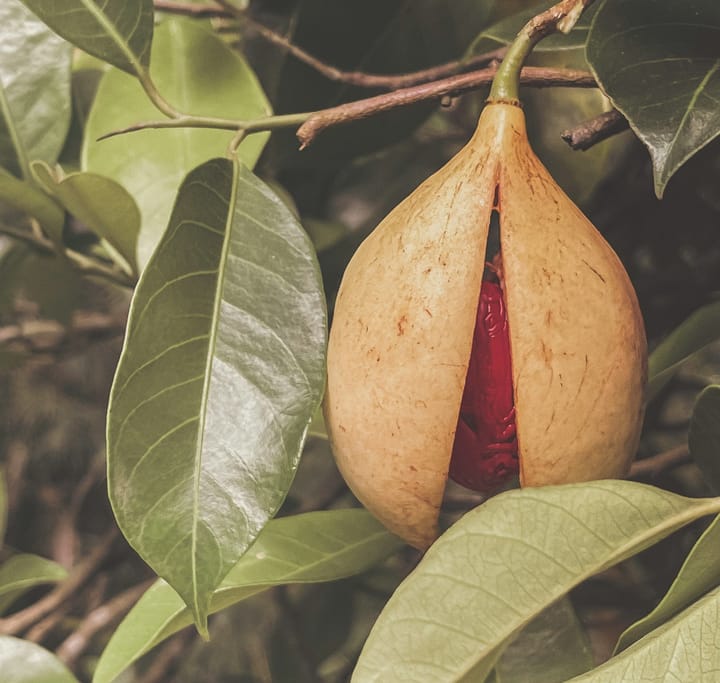The Ultimate Guide to Fish Roe: A World Beyond Caviar
From popping salmon ikura to luxury sturgeon caviar, explore the diverse world of fish roe. Discover unique flavors, textures & cultural traditions that make each variety special. Your complete guide!
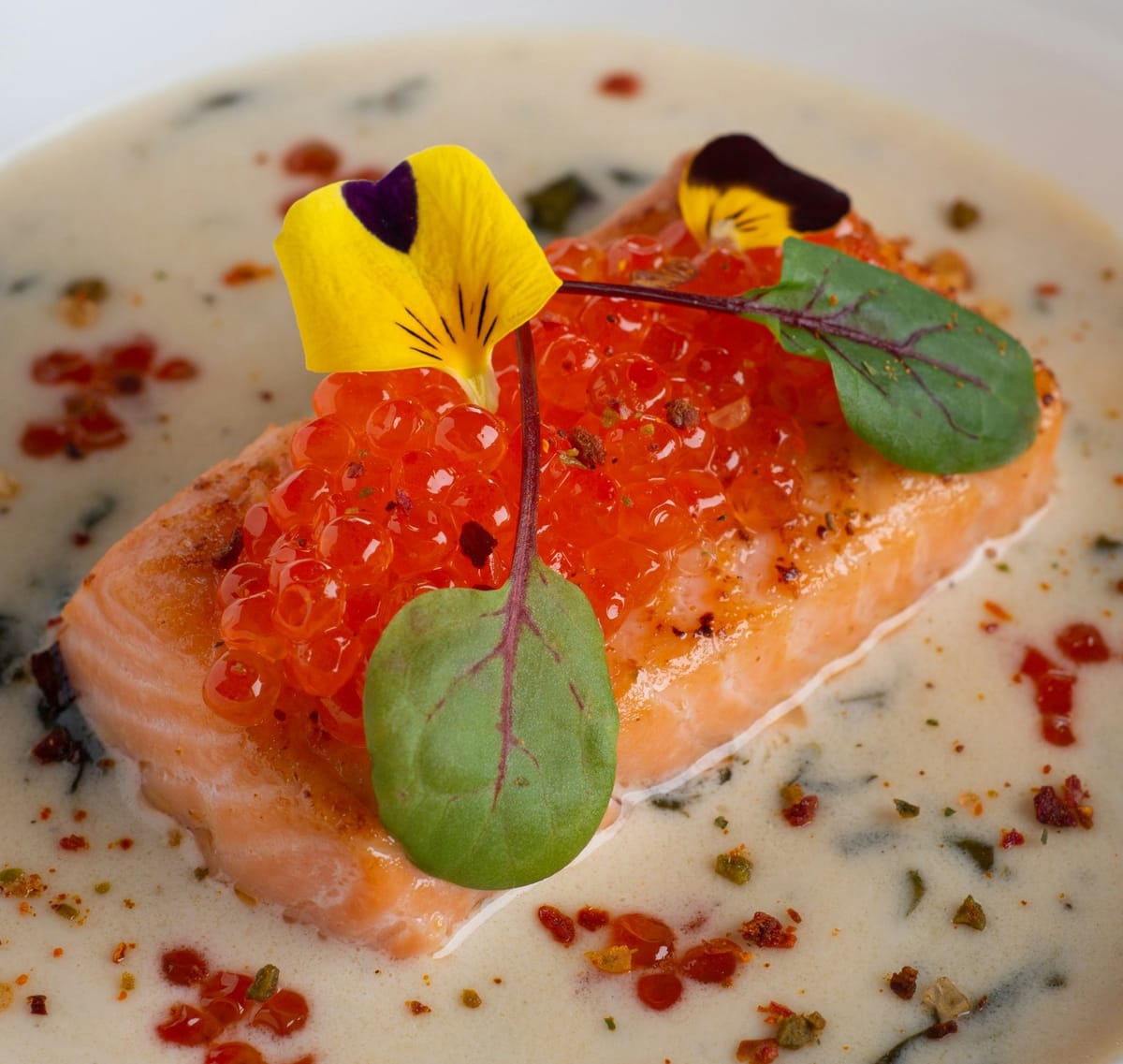
Picture this: tiny, glistening orbs that burst on your tongue, releasing waves of oceanic flavor.
If your mind immediately went to those astronomical-priced tins of caviar, you're missing out on an entire universe of fish eggs that are not only more accessible but often more interesting than their famous sturgeon cousins.
Fish roe has been quietly revolutionizing menus across the country, from high-end sushi bars to neighborhood poke shops.
These jewel-like eggs pack serious nutritional punch too – we're talking omega-3 fatty acids, vitamin B12, selenium, and premium protein, all wrapped up in tiny, flavorful packages that cultures worldwide have treasured for centuries.
Ikura: Your Perfect Starting Point
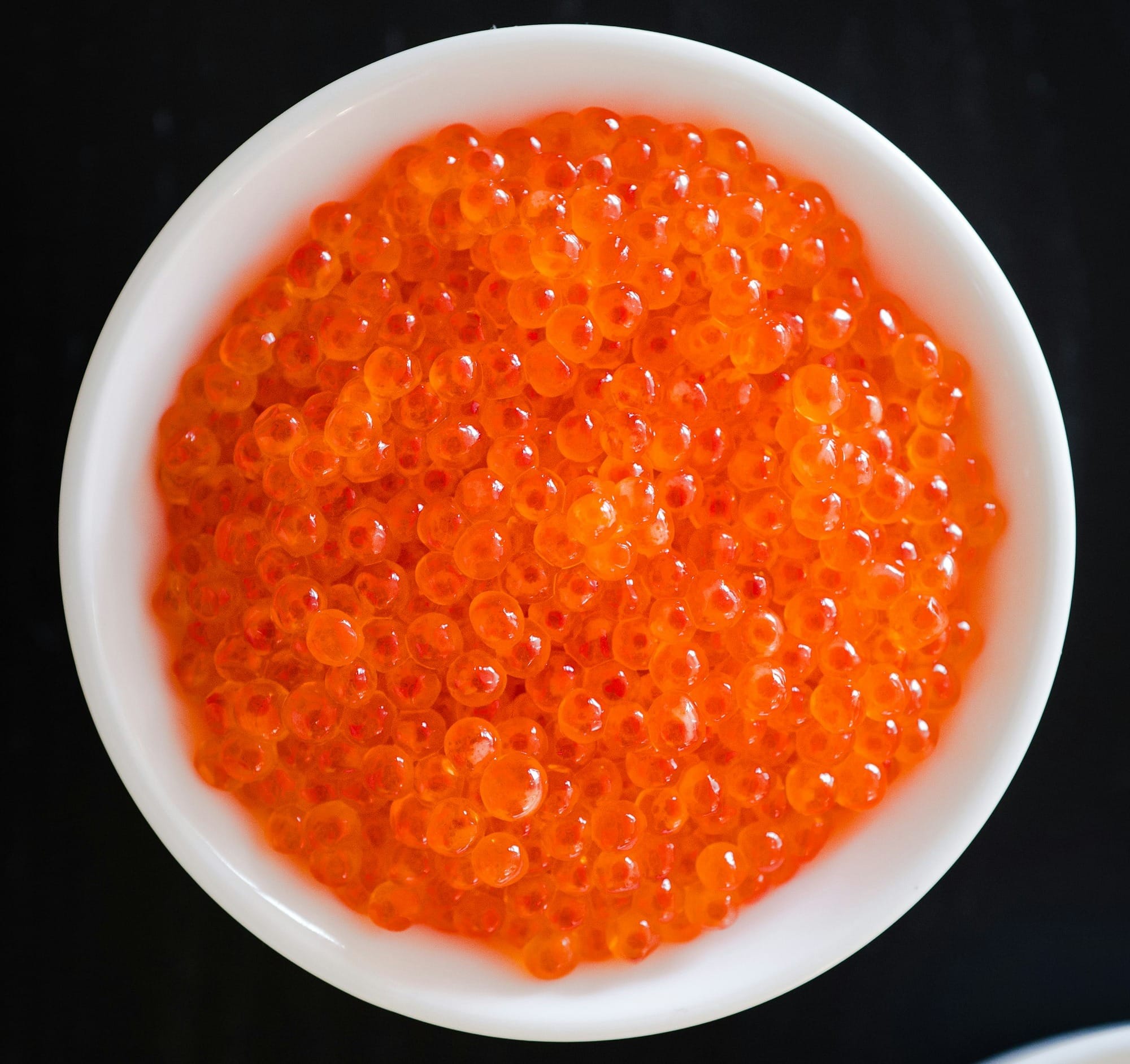
Let's kick things off with ikura – salmon eggs that look like translucent orange pearls, each about the size of a small pea.
These beauties offer something special: that satisfying pop when you bite down, followed by a flood of rich, savory flavor.
Think of it as nature's original popping boba, except instead of artificial fruit flavor, you get pure oceanic goodness.
What sets ikura apart from regular salmon caviar comes down to the curing process.
While Western methods typically stick to simple salt curing, Japanese tradition calls for a more complex approach.
The eggs luxuriate in a bath of soy sauce, dashi (that incredible umami-rich stock), and sake.
This transformation creates layers of flavor that go way beyond basic saltiness – you get sweetness, depth, and that mysterious savory quality that keeps you coming back for more.
Order ikura at any decent sushi spot and you'll likely see it crowning a small mound of rice (that's ikura nigiri) or generously scattered over a bowl of sushi rice (ikura don).
The eggs burst between your teeth, releasing their treasure while the rice provides the perfect neutral backdrop. Pro tip: pair it with cold, crisp sake or a minerally white wine to enhance those oceanic notes.
Mentaiko: Where Spice Meets the Sea
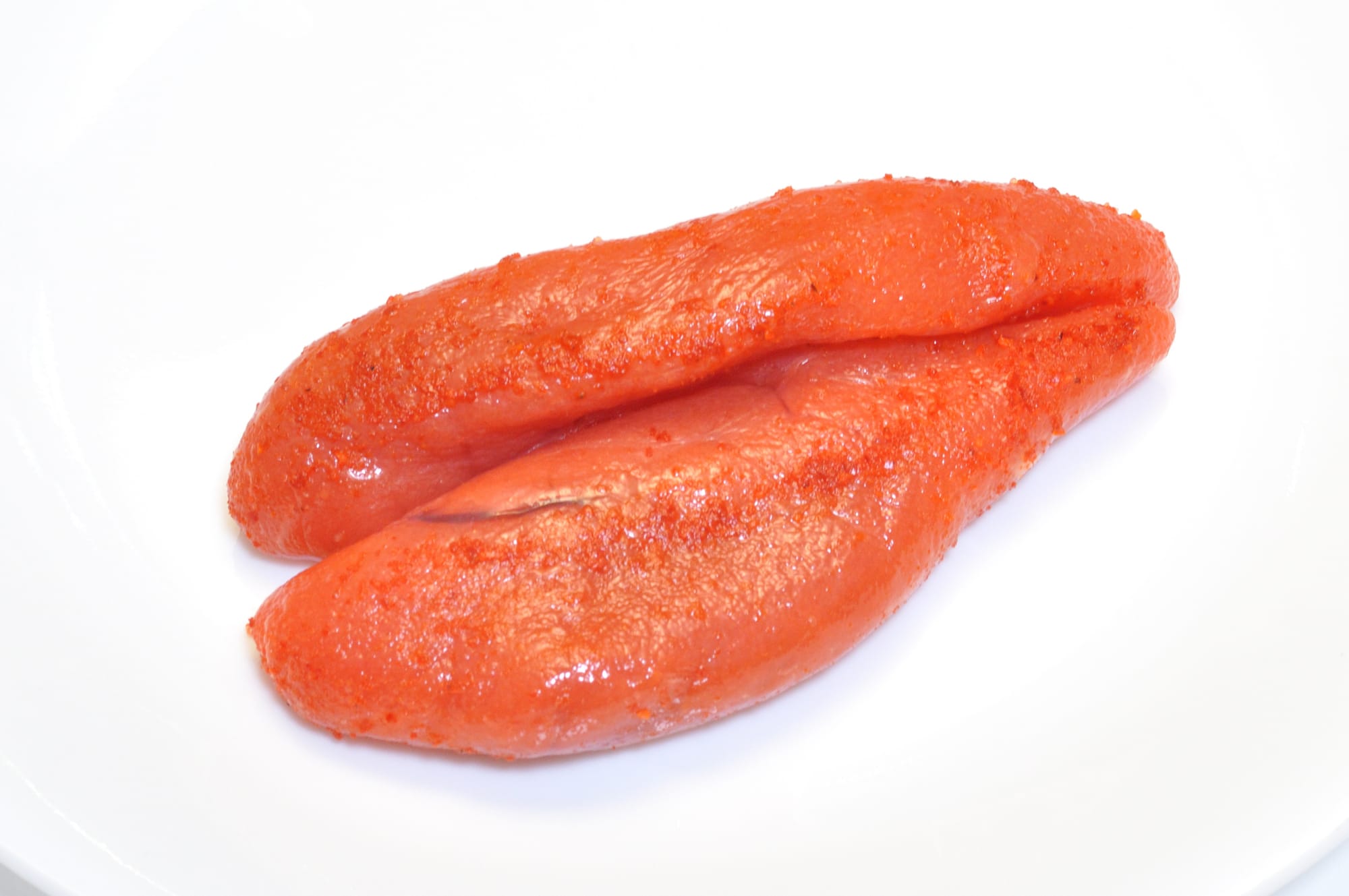
Ready to turn up the heat? Enter mentaiko, pollock roe that comes in intact sacs and packs a spicy punch. This delicacy traveled from Korea (where they call it myeongnan-jeot) to Japan, picking up fans everywhere along the way.
The magic happens during curing, when these eggs meet their match in a blend of salt, chili peppers, kelp, and sake.
The result? A creamy, spicy spread that delivers complexity in every bite. The heat builds gradually – enough to wake up your palate without overwhelming it.
Here's where things get really interesting: mentaiko has become a fusion superstar. Sure, you'll find it stuffed into rice balls at traditional Japanese joints, but innovative chefs are going wild with it.
Mentaiko pasta has achieved cult status – imagine creamy carbonara with an oceanic twist and a gentle kick of heat.
Some places even whip it into compound butters for seafood or fold it into mashed potatoes for an unexpectedly amazing side dish.
Tobiko: Tiny Eggs, Big Impact
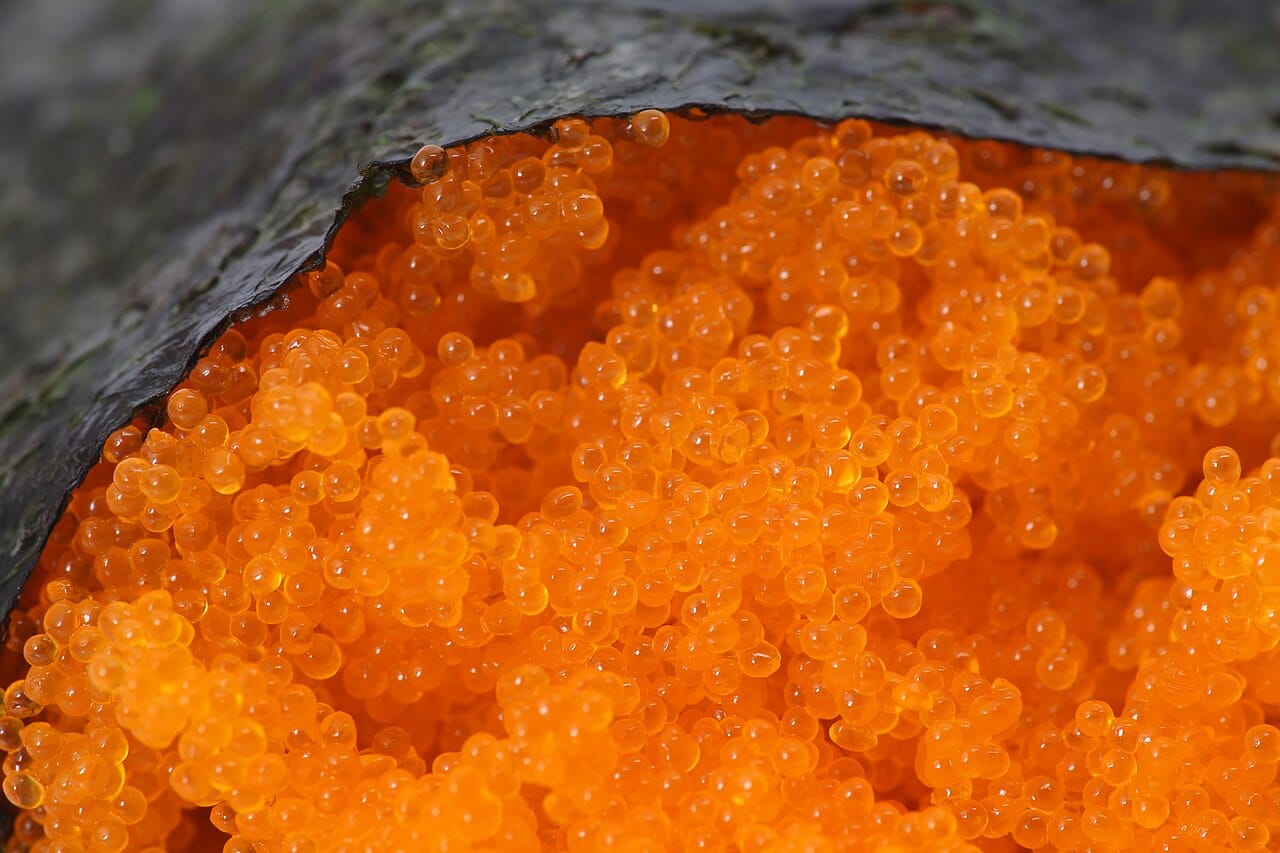
Those little crunchy orange beads dancing on top of your California roll? Meet tobiko, the flying fish roe that brings both beauty and texture to the sushi game.
These eggs measure about half the size of ikura but make up for it with their distinctive crunch and versatility.
Natural tobiko sports a pale orange hue, but sushi chefs love to play with color.
Black tobiko gets its dramatic look from squid ink (and a subtle briny boost), while green versions incorporate wasabi for those who like to live dangerously.
Golden tobiko might feature yuzu citrus, adding a bright, zesty note to the mix.
The genius of tobiko lies in its supporting role. Its mild, slightly sweet flavor never overpowers, instead adding textural interest and visual pop to everything it touches.
You'll spot it everywhere from rainbow rolls to poke bowls, and once you start noticing it, you'll appreciate how that little crunch elevates each bite.
Masago: The Shishamo Roe
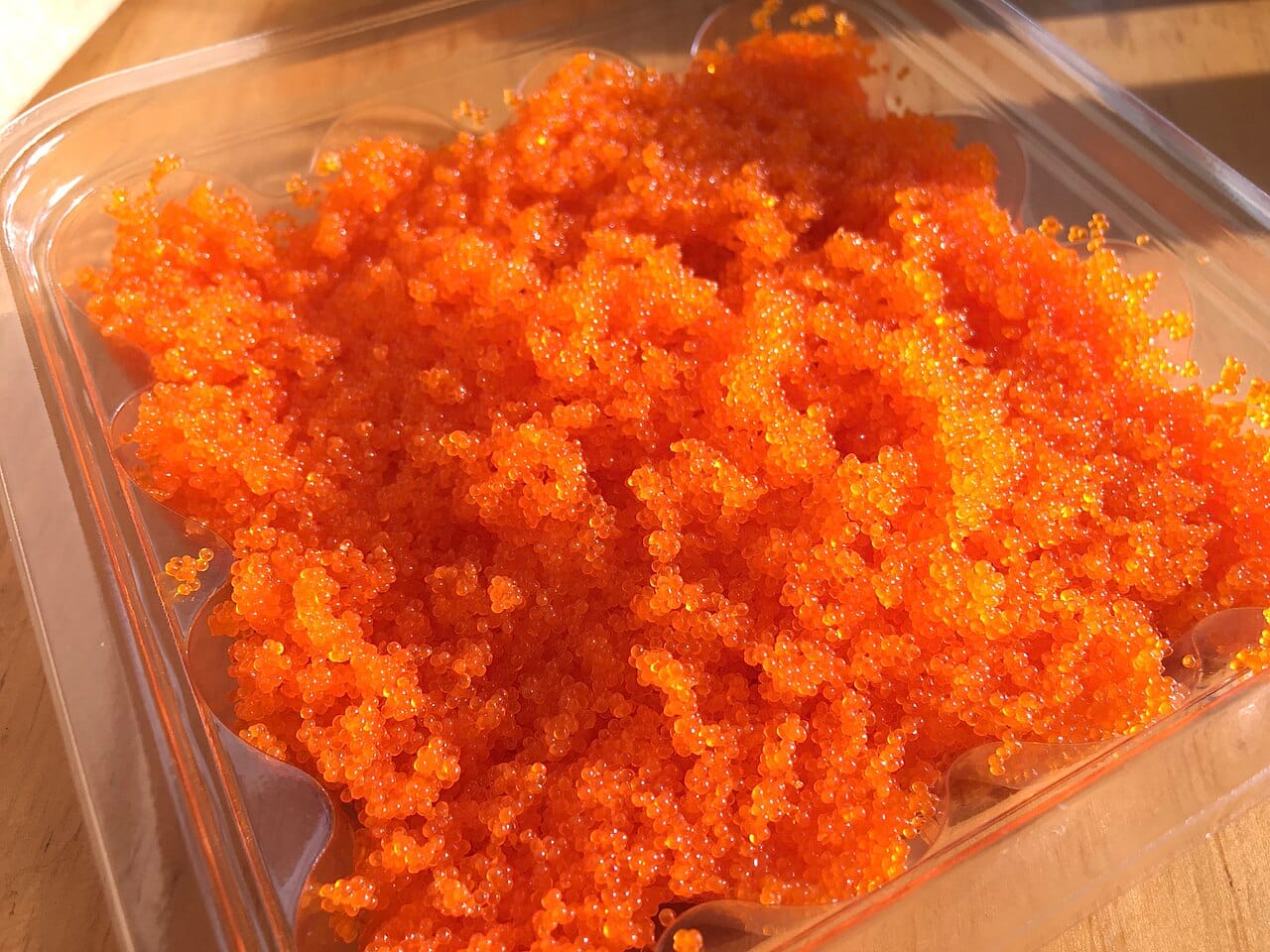
Think of masago as tobiko's hardworking cousin. These capelin eggs or known as shishamo roe deliver similar visual appeal and crunch at a fraction of the cost, making them the go-to choice for many sushi restaurants looking to add flair without breaking the bank.
Masago brings its own charm to the table with a slightly softer texture and more pronounced briny flavor than tobiko.
It's the roe you'll find mixed into spicy mayo, coating the outside of inside-out rolls, or adding surprising pops of flavor to tempura batter.
The affordability factor makes masago perfect for home experimentation.
Grab a jar from your local Asian grocery and suddenly you're garnishing everything from deviled eggs to avocado toast with these tiny flavor bombs.
Kazunoko: A Golden Discovery
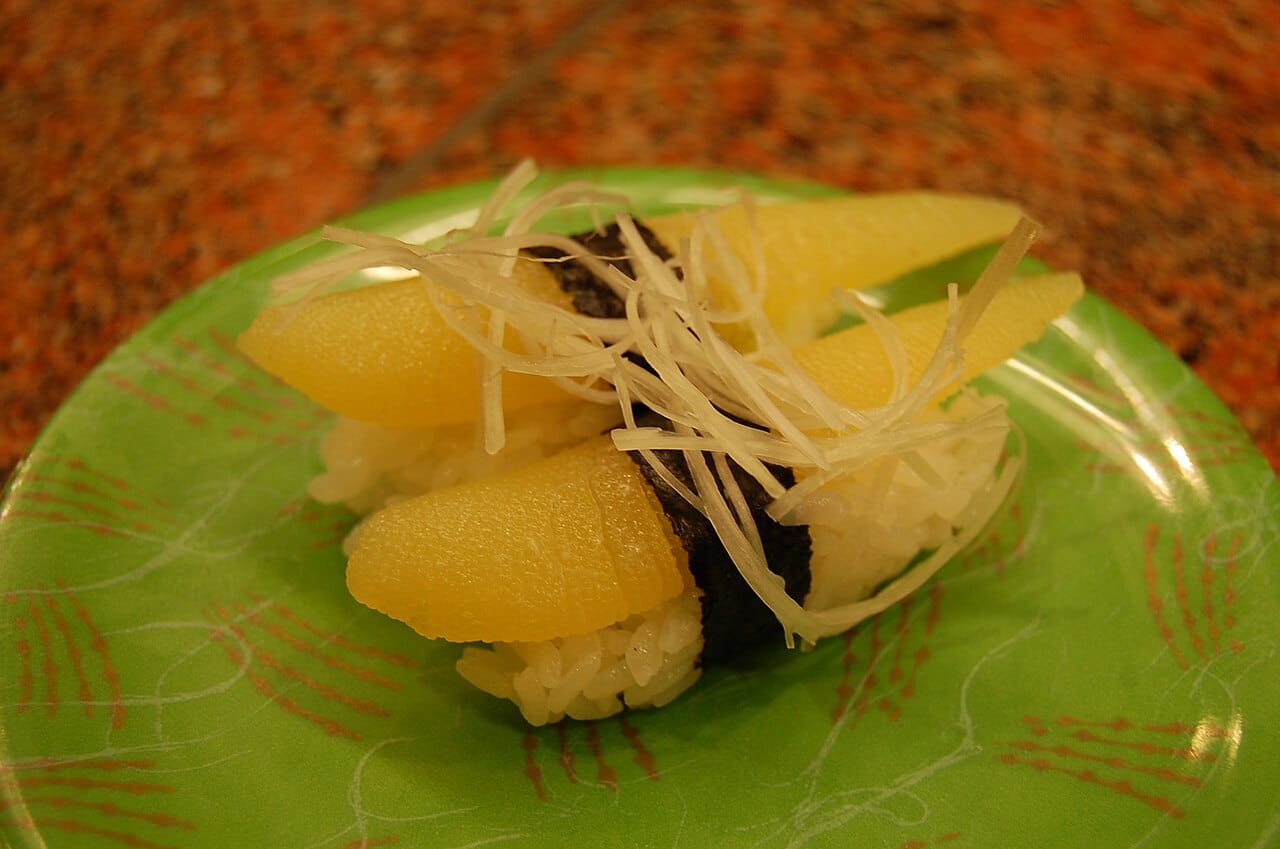
Ready for something completely different? Kazunoko presents herring roe in its natural state – intact skeins that look like small golden combs or pieces of crystallized sunshine.
This isn't your typical loose roe; instead, thousands of tiny eggs cling together in a cohesive mass.
The preparation echoes ikura's traditional method with dashi, soy sauce, and sake, but the eating experience couldn't be more different.
Kazunoko offers remarkable crunch – almost crystalline in texture – as those tightly packed eggs create a unique sensation with each bite.
The flavor combines oceanic brininess with deep umami notes from the curing liquid.
In Japan, kazunoko appears during New Year celebrations as a symbol of fertility and abundance.
Stateside, you'll find it at more traditional Japanese restaurants, especially during the holidays when chefs showcase authentic seasonal dishes.
The Nutritional Powerhouse You've Been Missing
These tiny eggs pack serious nutritional benefits into each serving.
We're talking concentrated omega-3 fatty acids – the same heart-healthy fats that make nutritionists sing salmon's praises.
They're loaded with vitamin D (crucial for those long winters), vitamin B12 for energy, and high-quality protein that rivals the fish itself.
For anyone watching their health without wanting to sacrifice flavor, fish roe offers an elegant solution.
A small serving delivers big nutrition and even bigger taste, proving that good things really do come in small packages.
The Luxe List: When Roe Gets Rarified
Beyond our accessible favorites lies the original aristocrat of the roe world: sturgeon caviar.

The holy trinity—Beluga, Ossetra, and Sevruga—each brings its own personality to the table. Beluga's pearl-gray eggs deliver unmatched butteriness (though banned in the US for conservation).
Ossetra charms with nutty complexity in shades from golden to chocolate. Sevruga's tiny gray-black pearls pack the most intense flavor punch.
Quality Ossetra starts around $150 per ounce, with rare varieties exceeding $500.
The price reflects more than scarcity—it's about sturgeon taking 20 years to mature, master-level curing skills, and storage so precise that a few degrees' difference can ruin everything.
Serve it right (mother-of-pearl spoons, never metal) and experience waves of flavor: brininess melting into cream, finishing with whispers of hazelnut.
At the pinnacle sits Almas caviar from albino beluga sturgeon—$35,000 per kilogram, packaged in gold, more status symbol than sustenance.
Beyond the Plate
Fish roe opens doors to understanding how cultures preserve, celebrate, and share through food.
From kazunoko's New Year symbolism to mentaiko's Korean-Japanese journey, each variety carries history in its tiny spheres.
The roe spectrum stretches from everyday pleasures to once-in-a-lifetime splurges. Start where you're comfortable, but don't shy away from occasional indulgence.
Life's too short not to explore these oceanic treasures. Once you venture beyond basic caviar, you'll find an entire world of flavors waiting beneath the waves.
